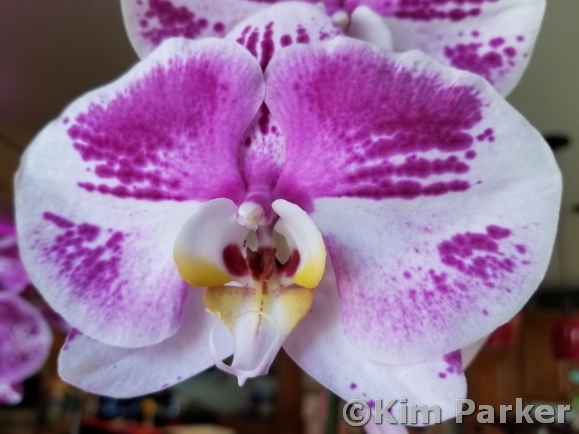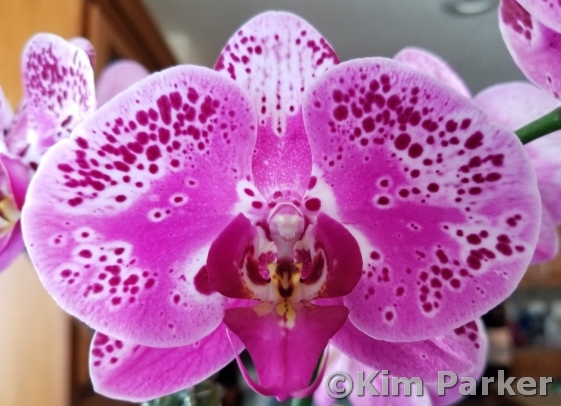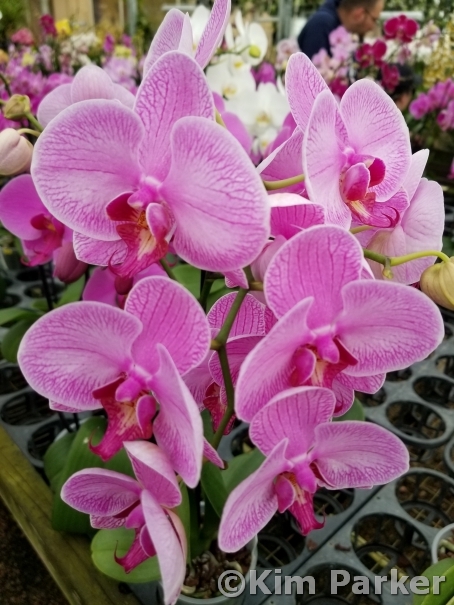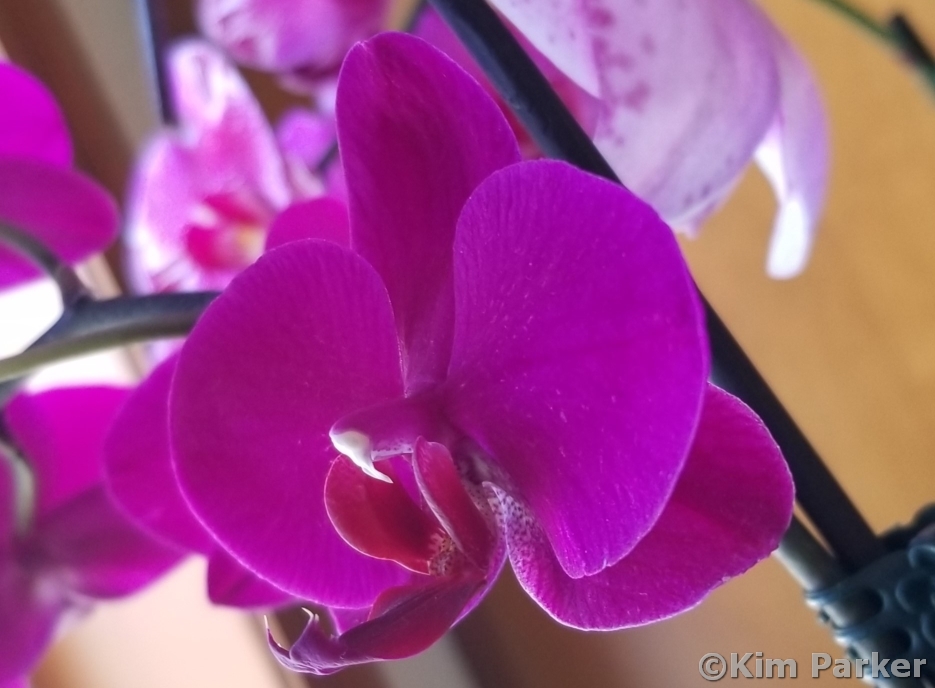Phalaenopsis, or “Moth” orchids, are one of the most popular and widely available types of orchids. Phalaenopsis orchids are attractive plants with wide, shiny leaves and come in sizes from regular to miniature, ready to fit into nearly any space. The broad, flat flowers resemble a large-winged moth in flight. Flowers come in a dizzying array of colors ranging from white to purple and pink, some with spots or stripes, and can last up to six months! With a little knowledge, your Phalaenopsis orchid will bloom on Mother’s Day for many years to come!

Orchids as Houseplants
Phalaenopsis are tropical plants native to Southeast Asia, India, Polynesia, and the Philippines. The growing conditions they need are very close to the conditions inside our homes, so Phalaenopsis do very well as houseplants. Place your orchid in an East or South-facing window, giving them bright, but not direct, light. South-facing windows may require a sheer curtain to protect them from direct sun. They prefer around 50% humidity. Watering and Fertilizing Phalaenopsis are epiphytes, meaning they grow on trees, rocks or other plants, and not in the soil. They don’t have any way to store water, so must be watered before the media completely dries out. Water your Phalaenopsis orchid with tepid water (never ice cubes or softened water) once or twice a week if potted in bark and once every 10 to 14 days if potted in sphagnum moss. Fertilize with a balanced fertilizer, diluted to half strength, with every watering. Flush the media once a month and repot once every two years.
Reblooming
Phalaenopsis orchids bloom once a year when young and may eventually move into nearly continuous bloom when mature. The primary reason an orchid doesn’t rebloom is that it has not received enough light, although adequate water and nutrients are also important. Phalaenopsis need a period of lower temperatures (day/night) in the fall to initiate a bloom spike beginning in December through February. Support the new flower spike on a stake as it grows to train it upwards, allowing the flower spike, or inflorescence, to gracefully curve downwards and towards the light. Avoid sudden changes in light, watering or temperature once the blossoms begin to open, or bud blast may occur. After flowering, trim the spike back to just above the lowest green node or as close to the base of the plant as you can. Extremely rare, Phalaenopsis orchids may produce a baby orchid, or Keiki, from one of the nodes on the flower spike. Allow the Keiki to grow as large as possible before separating it from the parent plant and potting up.
Additional Information
For more details on how to successfully grow your Phalaenopsis orchid, visit the American Orchid Society. Look for our next article on watering tips and providing the right light for your orchids. The LCMG will be hosting a free orchid workshop on May 14. Space is limited, so please use this Google form to register for the workshop!
Author: Kim Parker, Laramie County Advanced Master Gardener
Follow us on our social media:


